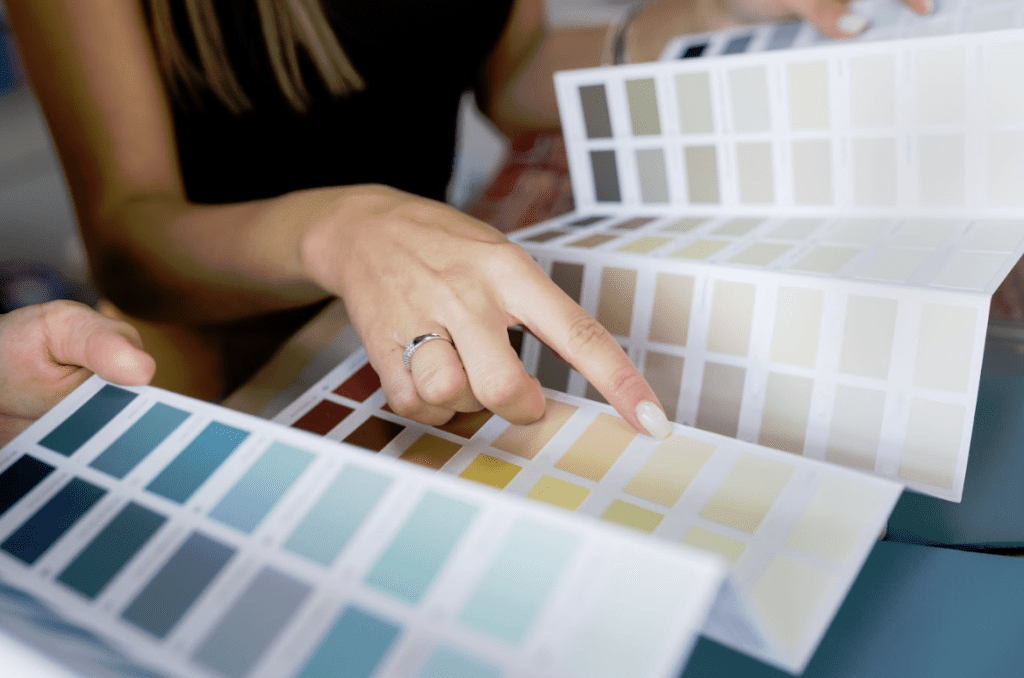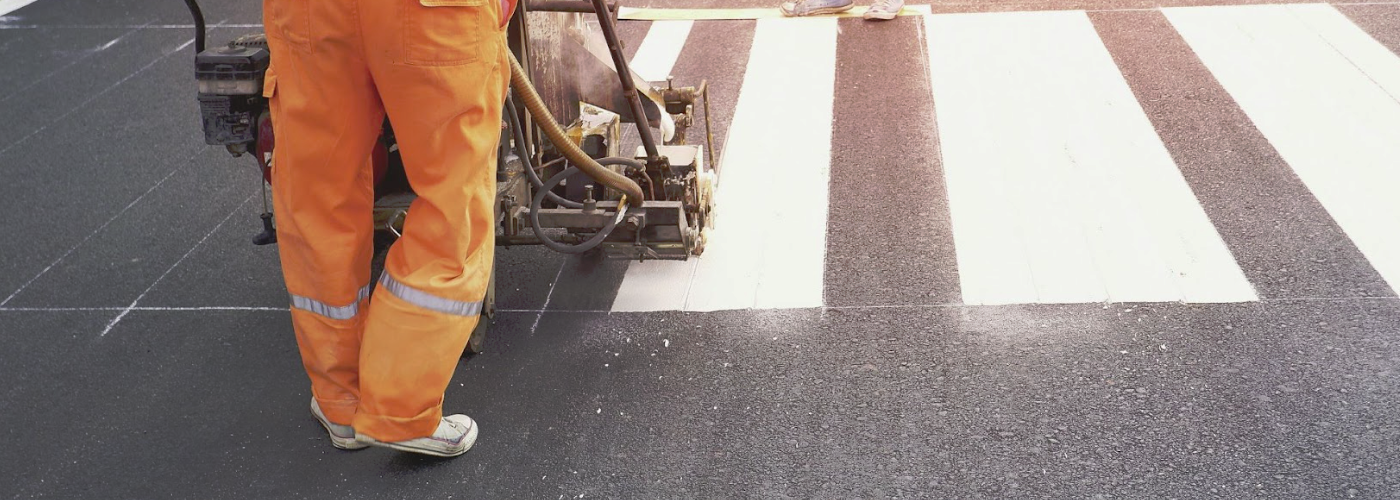High-traffic areas, both indoors and outdoors, are constantly exposed to wear and tear, making them more prone to damage and deterioration. With relentless foot traffic, scuff marks, dirt, and the impact of weather conditions, selecting the appropriate paint can make a significant difference in the longevity and appearance of your walls.
This guide will provide insights on how to identify high-traffic areas and the key factors to consider when selecting the best paint for your needs.
Identifying High-Traffic Areas In Your Home Or Office
High-traffic areas are spaces that experience frequent and consistent use, and it’s essential to identify them in both interior and exterior spaces to ensure you choose the most suitable paint for long-lasting results.
- Exterior Spaces
- Building Entrances and Exits: The exterior walls surrounding the entrances and exits of a space often experience high traffic, with people brushing against the walls as they come and go. These areas may also be more exposed to the elements, which can cause additional wear and tear.
- Porches and Patios: Outdoor living spaces like porches and patios are also considered high-traffic areas. Frequent use, exposure to the elements, and potential damage from patio furniture make it essential to select a durable, weather-resistant paint for these surfaces.
- Outdoor Staircases and Walkways: Exterior staircases and walkways can experience significant foot traffic. Choosing a durable paint or stain is crucial to maintaining their appearance and safety. In addition, these areas may require slip-resistant coatings to reduce the risk of accidents.
- Fences and Gates: Fences and gates, particularly those close to pedestrian walkways or high-use areas, may experience more wear and tear than other exterior features. A durable, weather-resistant paint or stain is vital to keep these surfaces looking their best.
- Roads: High-traffic roads and other paved surfaces require specialized paint or coatings designed to withstand heavy use, weather conditions, and exposure to various chemicals. For example, road marking paint, like those from TranslineInc.com, is usually durable, visible, and resistant to fading, chipping, or peeling. In addition, certain areas of roads, such as pedestrian crosswalks, may require slip-resistant coatings to enhance safety.
- Interior Spaces
- Residential: In homes, high-traffic areas often include hallways, entryways, kitchens, living rooms, and staircases. These spaces are prone to constant foot traffic, which can lead to wear and tear on the walls and dirt and scuff marks. Children’s playrooms and bedrooms may also be considered high-traffic areas due to the potential for wall damage and staining.
- Commercial: In commercial settings, corridors, break rooms, conference rooms, and reception areas are among the most frequented areas. These spaces require durable paint that can withstand constant use, cleaning, and potential damage from office equipment, furniture, or high volumes of people.
Whether you’re buying interior or road paint, consider each space’s specific needs and challenges. Consider factors like the level of foot traffic, exposure to dirt and staining, and the potential for wall damage or surface wear when determining the best paint or coating for each area. By carefully assessing the needs of both interior and exterior high-traffic spaces, you can ensure a long-lasting, attractive, and durable finish for your home, office, or urban environment.
Key Factors When Choosing Paint For High-Traffic Areas
High-traffic areas, both indoors and outdoors, demand a durable and long-lasting paint solution that can withstand the wear and tear of daily use. Selecting the right paint for these spaces is essential to maintain an attractive and resilient finish.
- Type of Paint
The two most used types of paint are water-based (latex) and oil-based (alkyd). Water-based paint is known for its easy application and quick drying time, while oil-based paint offers superior durability and stain resistance.
For high-traffic indoor areas, high-quality water-based paint with added durability features, such as acrylic or latex enamel, is recommended.
For high-traffic outdoor areas, water-based paint is generally recommended due to its flexibility, which allows it to expand and contract with temperature fluctuations, reducing the risk of cracking and peeling.
- Sheen
Paint sheen refers to the glossiness or shine of the paint’s finish. The right sheen can make a significant difference in the durability and appearance of your painted surfaces. For high-traffic areas, the best options are:
- Flat or Matte: This finish has little to no shine and is ideal for hiding surface imperfections. However, they’re not that durable and may show dirt and scuff marks more easily. Flat or matte sheens are generally not recommended for high-traffic areas.
- Eggshell: Slightly more durable than flat finishes, eggshell paint provides a low sheen and is suitable for lower-traffic areas like living rooms and bedrooms.
- Satin: This finish offers a subtle shine and is more resistant to dirt, mildew, and moisture than flat paint. Satin is a popular choice for exterior walls and siding in high-traffic areas, as well as interior hallways, family rooms, and kids’ bedrooms.
- Semi-gloss: With increased durability and resistance to moisture and stains, semi-gloss paint is suitable for doors, window trim, and railings in high-traffic outdoor areas. It’s also an excellent choice for kitchens, bathrooms, and laundry rooms.
- Gloss: It’s the most durable finish and is ideal for areas that require frequent cleaning or are exposed to extreme weather conditions. Gloss is great for doors, trim, and high-use outdoor furniture.
- Color
When selecting a color for high-traffic areas, consider the surrounding environment and the potential for dirt, stains, and wear.
Darker colors tend to hide dirt and stains better than lighter shades but may absorb more heat, which could cause paint to fade faster. Lighter colors may be more reflective, providing a cooler surface in sunny environments. Neutral colors are often a safe choice, as they blend well with various architectural styles and landscapes.
- Quality
Investing in high-quality paint is essential for areas with heavy foot traffic. High-quality paint provides enhanced durability, weather resistance, and color retention. While it may be more expensive upfront, it can save time and money in the long run by reducing the need for touch-ups or repainting.
- Eco-Friendliness
With increasing environmental awareness, many people are opting for eco-friendly paint options. Look for paints with low or no volatile organic compounds (VOCs), which are harmful chemicals that can be released into the air as the paint dries.
Low-VOC and no-VOC paints aren’t only better for the environment they also have less odor and can improve indoor air quality.
Conclusion
Choosing the best paint for high-traffic areas is crucial for maintaining a beautiful and durable finish. By considering factors such as paint type, finish, color, and quality, you can select a product that will withstand the wear and tear of daily life.
Whether you’re painting indoors or outdoors high-traffic areas, investing in premium paint and following the suggested maintenance techniques will help ensure a long-lasting, attractive result.

Building, Design & Construction Magazine | The Choice of Industry Professionals





